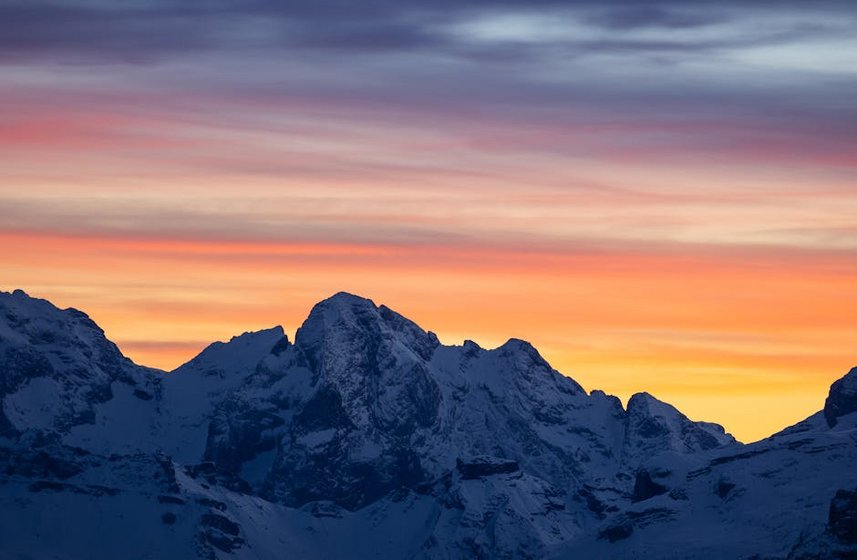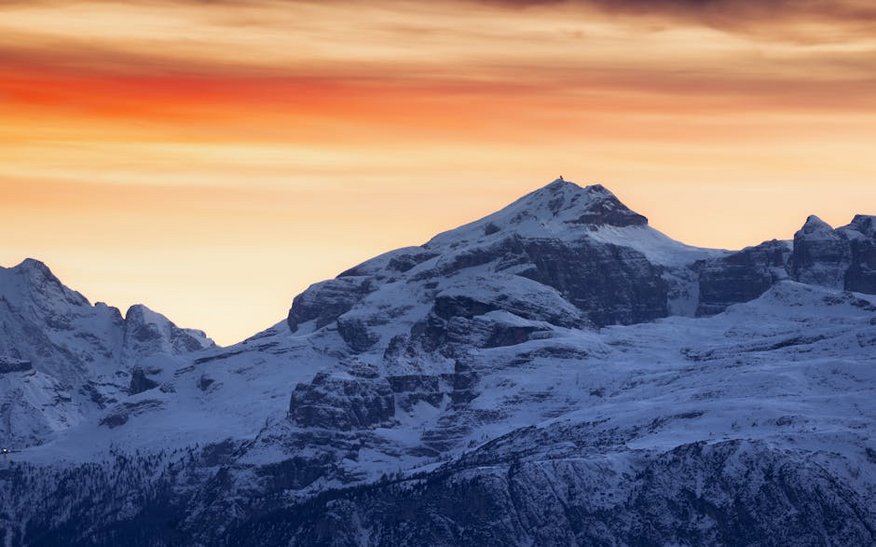Dolomites Winter Climbing: Alpine Adventures in Italy’s Peaks
Dolomites winter climbing combines dramatic limestone spires with challenging ice formations across a UNESCO World Heritage landscape accessible from December through March. This alpine discipline demands specialized gear like crampons and ice axes, with routes ranging from beginner-friendly gullies to expert multi-pitch ascents requiring previous mountaineering experience. Your preparation should focus on weather awareness, physical conditioning, and selecting certified guides for safe exploration of this unique climbing environment.
Essential Alpine Information
The Dolomites mountain range spans northeastern Italy with eighteen peaks exceeding 3,000 meters elevation across five provinces. These sedimentary rock formations feature distinctive pale coloring and vertical faces that create ideal conditions for mixed climbing when temperatures drop below freezing. Winter conditions typically persist from late November until early April, transforming summer hiking trails into technical ice climbing opportunities.
Local climbing culture dates back to nineteenth-century pioneer expeditions, with modern safety standards evolving through established via ferrata routes. The region’s geological history includes coral reef origins from 250 million years ago, now eroded into the iconic spires and towers climbers ascend today. Italian, German, and Ladin linguistic traditions reflect the area’s cultural diversity alongside well-developed tourism infrastructure.
Geographical Features and Climate
Understanding the terrain helps climbers anticipate conditions and select appropriate routes for their skill level.
- Vertical relief reaches 1,600 meters between valley floors and summits, creating rapid weather changes that require constant monitoring and flexible itinerary planning.
- Dolomitic limestone offers excellent friction for technical climbing but becomes treacherous when coated with verglas or thin ice layers during temperature fluctuations.
- Alpine microclimates produce significant variation between sunny south faces and shaded north walls, with temperature differences exceeding 20°F (11°C) within the same mountain group.
- Budget climbing trips cost $1,500-$2,200 using hostel accommodations, self-catering, and minimal guide days focusing on via ferrata routes with personal gear.
- Mid-range expeditions run $2,500-$3,200 featuring hotel stays, partial guide services, rented technical equipment, and valley-based climbing with daily transport.
- Luxury experiences reach $3,800-$4,000 with mountain hut accommodations, full-time guides, premium equipment rentals, and specialized instruction for advanced techniques.
- Dolomites UNESCO World Heritage Site
- International Climbing and Mountaineering Federation Safety Standards
Historical Mountaineering Context
Pioneer ascents began in the 1860s with British and Austrian alpinists establishing classic routes that remain popular today. The first winter ascent of Marmolada’s south face occurred in 1901, setting precedents for cold-weather techniques later refined with modern equipment. Local guides developed the via ferrata system during World War I, creating protected climbing routes that now facilitate winter access.
Post-war infrastructure improvements made the mountains more accessible while preserving the challenging nature of alpine ascents. Contemporary climbing focuses on sustainable practices and safety protocols, with guided tours available through certified operators maintaining traditional values. The region continues attracting international climbers seeking both historical routes and new winter challenges.
Climbing Difficulty Classifications
Winter routes utilize UIAA grading systems ranging from II (moderate) to VI+ (extremely difficult) for technical climbing sections. Ice conditions receive separate ratings from WI3 (moderate ice) to WI6 (vertical pillars), with mixed climbing graded M3 through M8. Avalanche risk assessments using European danger scales become critical for route selection during snowfall periods.
Beginners should start with guided via ferrata routes featuring fixed cables and ladders, progressing to ice gullies like Cinque Torri’s easy accesses. Intermediate climbers tackle classic mixed routes such as Piz Boè’s north face, while experts attempt demanding ascents like Marmolada’s ice channels. All climbers must verify current conditions through local mountain guides before attempting any route.

Alt: “dolomites-winter-climbing-ice-axe-crampons-technical-ascents”
Dolomites Winter Climbing – Planning Your Expedition
Successful Dolomites winter climbing expeditions require meticulous preparation across equipment, fitness, and logistical domains. Start training three months beforehand with cardiovascular exercises and strength training targeting core muscles and leg endurance for sustained climbing efforts. Research weather patterns showing January and February offer the most stable conditions, though temperatures frequently drop to 14°F (-10°C) at higher elevations.
Budget between $1,500-$4,000 for a one-week climbing trip depending on guide services, equipment rentals, and accommodation preferences. Guided tours provide essential safety oversight and local knowledge, while independent climbers need comprehensive insurance covering alpine rescue services. Book mountain huts six weeks in advance for popular areas like Sella Group or Civetta, as capacity reduces during winter operations.
Physical preparation should include altitude acclimatization if arriving from sea level, with rest days planned between strenuous climbing sessions. Develop contingency plans for weather closures, as whiteout conditions can persist for multiple days during storm cycles. Verify all equipment meets UIAA safety standards, particularly helmets, harnesses, and protection gear subjected to extreme cold stress.
Best Time to Visit for Climbing Conditions
Prime climbing conditions typically occur between mid-January and late February when ice formations stabilize and avalanche risk decreases following early-season snowfall. December offers shorter days with average temperatures of 23°F (-5°C), while March provides longer daylight hours but increasing avalanche danger from warming trends. January delivers the coldest conditions with averages of 18°F (-8°C) and maximal ice development on north-facing routes.
Shoulder seasons in early December or late March appeal to experienced climbers comfortable with variable conditions and potential route closures. February balances reliable ice with reasonable daylight, though weekend crowds increase at popular locations like Tre Cime di Lavaredo. Monitor regional avalanche bulletins daily and consult guiding services for current route conditions before finalizing travel dates.
Budget Planning and Costs
Climbing expenses vary significantly based on guide services, equipment needs, and accommodation style during your Dolomites winter adventure.
Essential Preparation Checklist
Technical gear must include B-rated crampons, ice tools with leashless systems, helmet with ventilation control, and harness compatible with thick layers. Clothing systems should incorporate moisture-wicking base layers, insulated mid-layers, and waterproof outer shells rated for alpine conditions below 14°F (-10°C). Pack emergency equipment including avalanche transceiver, probe, shovel, first aid kit, and satellite communication device.
Documentation requires valid passport, European Health Insurance Card or equivalent coverage, climbing insurance with mountain rescue, and via ferrata kit certification. Begin physical training 12 weeks pre-departure with focus on endurance, strength, and flexibility exercises specific to mixed climbing movements. Book international flights into Venice Marco Polo Airport (VCE) or Munich Airport (MUC), then arrange ground transport to Bolzano or Cortina d’Ampezzo base towns.
Top Climbing Routes and Alpine Activities
The Dolomites offer diverse winter climbing experiences across multiple mountain groups with varying difficulty levels and accessibility. Classic ice routes form in predictable locations like frozen waterfalls in Val di Fassa, while mixed climbing opportunities abound on north faces throughout the Sella Massif. Many summer hiking trails transform into snow-covered approaches requiring snowshoes or skis for access to climbing starting points.
Guided via ferrata routes provide introductory winter experiences with fixed protection systems on routes like Tridentina or Olivieri. Independent climbers find challenging objectives on Marmolada’s ice channels or Civetta’s north face, though these require advanced skills and conditions assessment. All climbing activities should incorporate flexibility for weather changes, with alternative plans for indoor training or cultural visits during storm periods.
Must-See Climbing Areas
Tre Cime di Lavaredo features iconic limestone towers with winter routes like Via Comici requiring technical mixed climbing skills and proper ice conditions. The Sella Group offers accessible climbing from Passo Sella with multiple gully options suitable for intermediate climbers and guided groups. Marmolada’s glacier provides high-altitude ice climbing experiences on the highest peak in the Dolomites at 3,343 meters.
Cinque Torri delivers beginner-friendly options with short approaches and varied route densities across its namesake five towers. Civetta presents expert-level challenges on its massive north wall with routes like Philipp-Flamm demanding commitment and precise conditions. Val Gardena combines climbing with apres-ski culture, allowing multi-activity itineraries when weather prevents alpine ascents.
Hidden Gems and Local Favorites
San Martino di Castrozza features less-crowded ice formations in Pale di San Martino with reliable conditions from January through March. Local guides favor Passo Giau areas for sheltered climbing during windy conditions, with quality ice development in north-facing gullies. The Fanes-Sennes-Braies Nature Park offers remote climbing experiences requiring ski approaches but rewarding with solitude and pristine environments.
Traditional rifugios like Lagazuoi or Fanes provide authentic mountain experiences with overnight stays accessible via winter routes. Lesser-known valleys including Val Badia or Val di Fiemme contain unpublicized ice climbs discovered through local guide networks. Cultural integration opportunities include Ladin language workshops or traditional cuisine tastings that enhance the climbing expedition beyond physical achievements.
Avalanche Safety and Risk Management
Winter climbing inherently involves avalanche terrain requiring formal education in snowpack assessment and route selection. Take certified courses like AIARE Level 1 before attempting independent ascents, learning companion rescue techniques and decision-making frameworks. Practice transceiver searches regularly, as response time critically impacts survival rates in burial scenarios.
Consult daily avalanche forecasts from regional services like AINEVA, recognizing that danger levels frequently reach 3 (considerable) during storm cycles. Develop conservative turn-around criteria including weather deterioration, unstable snow observations, or team fatigue. Equip all party members with modern avalanche safety gear and ensure proficiency through pre-trip practice sessions in controlled environments.
Practical Travel and Accommodation Guide
Transportation logistics center around Bolzano and Cortina d’Ampezzo as primary hubs with rental car services, bus connections, and guide meeting points. Winter driving requires snow tires or chains, with many high mountain passes closed from November to May, necessitating longer valley routes. Local bus systems operate reduced winter schedules, making rental cars preferable for flexibility in reaching trailheads.
Accommodation ranges from luxury hotels in Cortina starting at $200 nightly to rifugio dormitories from $50 including half-board meals. Base yourself in valleys like Val Gardena or Alta Badia for optimal access to multiple climbing areas while avoiding daily long drives. Advance reservations become essential December through February, particularly for weekends and holiday periods.
| Accommodation Type | Features and Services | Price Range (USD) |
|---|---|---|
| Mountain Rifugios | Dormitory sleeping, family-style meals, gear storage, limited winter access | $50-80/night |
| Mid-Range Hotels | Private rooms, breakfast included, drying rooms, guide coordination | $120-180/night |
| Luxury Resorts | Spa facilities, fine dining, equipment rental, shuttle services | $250-400/night |
| Vacation Apartments | Self-catering kitchens, weekly rates, parking, multiple bedrooms | $90-150/night |


